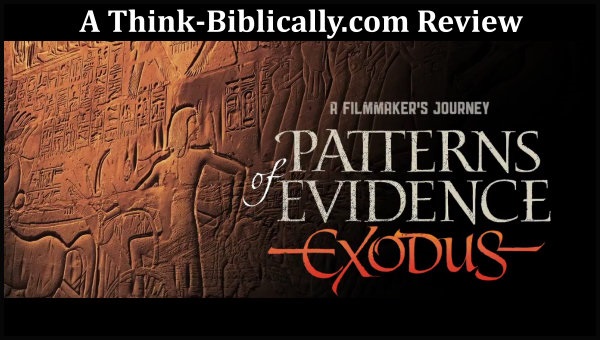By Tyson Thorne

Ask any leading biblical archeologist and they are likely to say that there is no evidence of the Exodus story the Bible recounts in great detail. What they really mean is that there is no evidence during the time of Ramses II -- or any time during Egypt’s New Kingdom. One man had the audacity to ask if perhaps the evidence existed previous to the accepted timeframe and found not only answers, but some pretty compelling evidence as well. Patterns of Evidence – Exodus, now available on Netflix, is the story that proves The Story.
I could tell you about the high production value, the wonderful music score, the great narration work performed by Kevin Sorbo, and the amazing filmography, but I don’t think that’s what readers of Think-Biblically.com are looking for. Instead, we’ll spill all the juicy details convinced that, rather than it spoiling the film, it will drive people to want to see it for themselves. Yes, it’s a documentary and yes, it’s that good.
Looking a few hundred years before the time of Ramses II, award-winning producer Tim Mahoney begins looking for patterns relevant to the Exodus account. Unlike most adventurers and truth seekers who search for the location of the crossing of the Red Sea, or for the real Mount Sinai, this film looks for multiple events that align with the biblical record. He begins looking for evidence of events leading up to and following the Exodus itself and as a result makes a more compelling case than most.
The filmmakers set the way-back machine to the middle kingdom and found under a city Ramses built the town of Avaris. This city is the key to setting up the story of the Exodus, as in it we find a palace for a high Egyptian family and on the grounds a small pyramid burial chamber. Inside is evidence of a Semitic man who was a high authority of Egypt, a man who wore a coat of many colors. Joseph. It’s the first link in a chain of evidence that unfolds across the one hour and 55 fifty-five minutes of the film.
The archeological site produces many other intriguing facts. The expansion of Semitic peoples in and around Avaris grew the population and wealth of the city, then a few generations later a sudden turn of fortune and enslavement of the people occurs. Much later there is evidence of the evacuation of these slaves causing a dramatic economic downturn. Furthermore, a written Egyptian account tells of the defeat of the Egyptian military by God, not gods, God. This defeat and the economic crisis left Egypt vulnerable, permitting the Hyksos invasion.
Encouraged by these finds that exactly match the biblical account, the team moved into modern day Israel to see if, in the same time period, they could locate evidence of Joshua’s campaign to capture the promised land. Jericho and Hazor, cities that do not survive to the time of Ramses II, fell in the same way as described in the Bible. These patterns of evidence prove the validity of the Bible’s historic record and leaves modern scholars with only a couple interpretive options.
The first possibility is that the Hebrews were a people that established themselves in a time period much several hundred years earlier than previously thought. There is expected resistance to this idea, but not as much as there is to the second possibility. There are several problematic dark periods in Egypt’s history. By playing with these unknown blocks of time the timeline itself can be altered, effectively moving the middle kingdom into alignment with the Bible historical record.
In all, this film is highly recommended. There are many important details that couldn’t be covered in this overview that all viewer’s, regardless of faith, will find interesting. If you don’t have Netflix the film is worthy of adding to your video library and is available on DVD as well.
|
|
